Many summer Dungeness crab fisheries begin July 1, plus a full slate of other fishing opportunities are happening right now Leave a reply
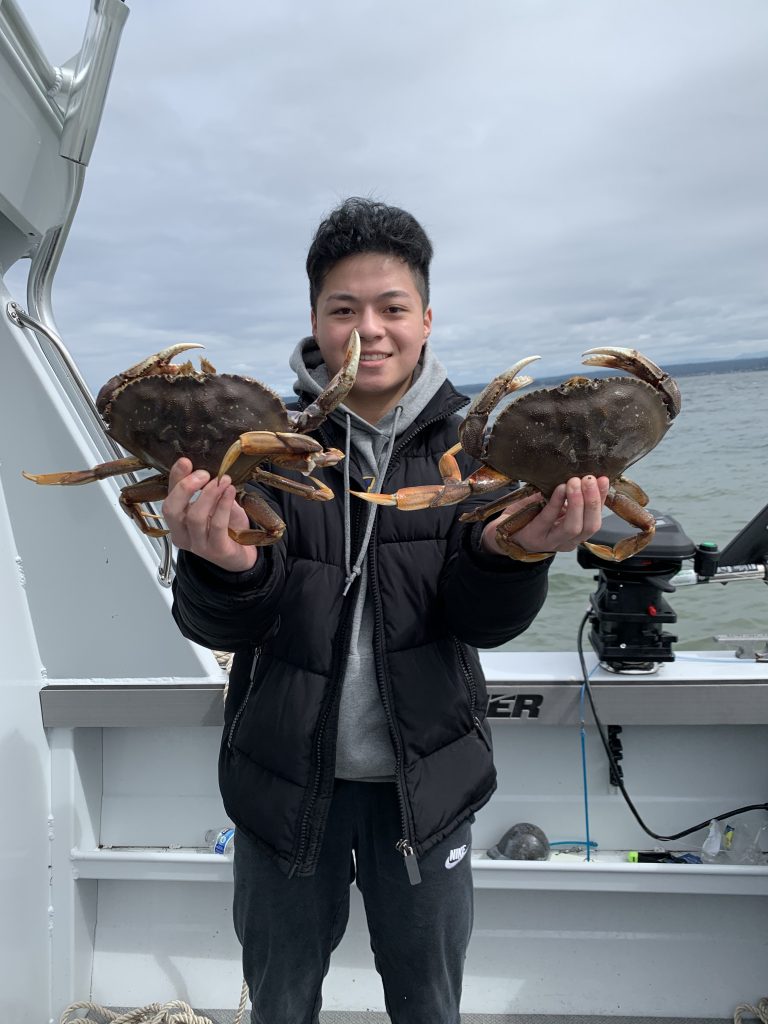
By Mark Yuasa
It’s time to get over feeling crabby as pursuing Dungeness crab is just on the summer-time horizon!
The Washington Department of Fish and Wildlife (WDFW) announced the recreational Puget Sound Dungeness crab that will begin July 1 in many marine areas, which is one of the most highly popular fishing activities for everyone.
“We had a high number of participants during 2020, and that shows you just how important the sport crab fisheries are to license sales,” said Don Velasquez, the WDFW shellfish biologist in Mill Creek.
The Dungeness crab season opens July 1 through Sept. 6 (closed Tuesdays and Wednesdays of each week) in the Strait of Juan de Fuca east of Bonilla-Tatoosh Island boundary line at Neah Bay (Marine Catch Area 4), Sekiu (5) and Port Angeles (6); the east side of Whidbey Island (8-1 and 8-2); and northern Puget Sound (9).
Central Puget Sound (10) will open July 11 through Sept. 6 with fishing allowed on Sundays and Mondays only. South-central Puget Sound (11) will open July 11 through Aug. 30 with fishing allowed on Sundays and Mondays only.
Hood Canal (12) north of Ayock Point will open July 1 through Sept. 6 (closed Tuesdays and Wednesdays of each week). Areas south of Ayock Point are closed this summer.
A section of San Juan Islands (7 South) opens July 15 through Sept. 30 (closed Tuesdays and Wednesdays of each week). Another San Juan Island section known as “7 North” opens Aug. 19 through Sept. 30 (closed Tuesdays and Wednesdays of each week). Those planning to crab after Labor Day must obtain a winter catch card.
Southern Puget Sound (13) will remain closed this summer to help Dungeness crab populations rebuild.
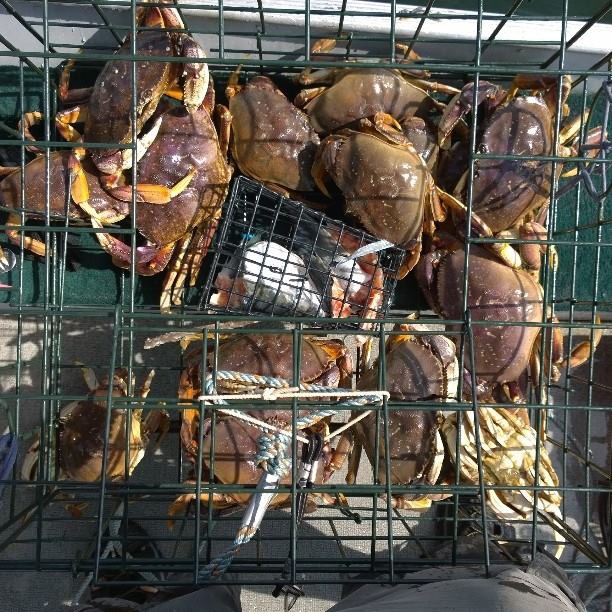
“In Area 9 test fishing looked better than last year in Port Townsend and Oak Bay areas,” Velasquez said. “In Hood Canal we will maintain a closure south of Ayock Point for the 2021 season.”
Both WDFW and tribal co-managers have been conducting abundance test fisheries during the late winter and spring, and have found a mixed bag in population levels around Puget Sound.
“Despite the closure south of Ayock we have been test fishing in the Tahuya and Lilliwaup areas, which are showing some promise for the future and will look at it more closely next year,” Velasquez said. “At one test site we yielded almost no legal-size male crabs in 2020, but this year got a burst of them along with some sub-legal crabs.”
Area 10 abundance appears to be somewhat better than last year based on the tribal test fishery, but Area 11 catches were down.
The Dungeness crab sport, non-tribal commercial and tribal fisheries caught 8,681,309 in 2020 (compared to 8,636,151 in 2019; 9,226,271 in 2018; and 9,363,389 in 2017). Catches have been trending downward since a record catch in 2015 when 11.8 million pounds was landed.
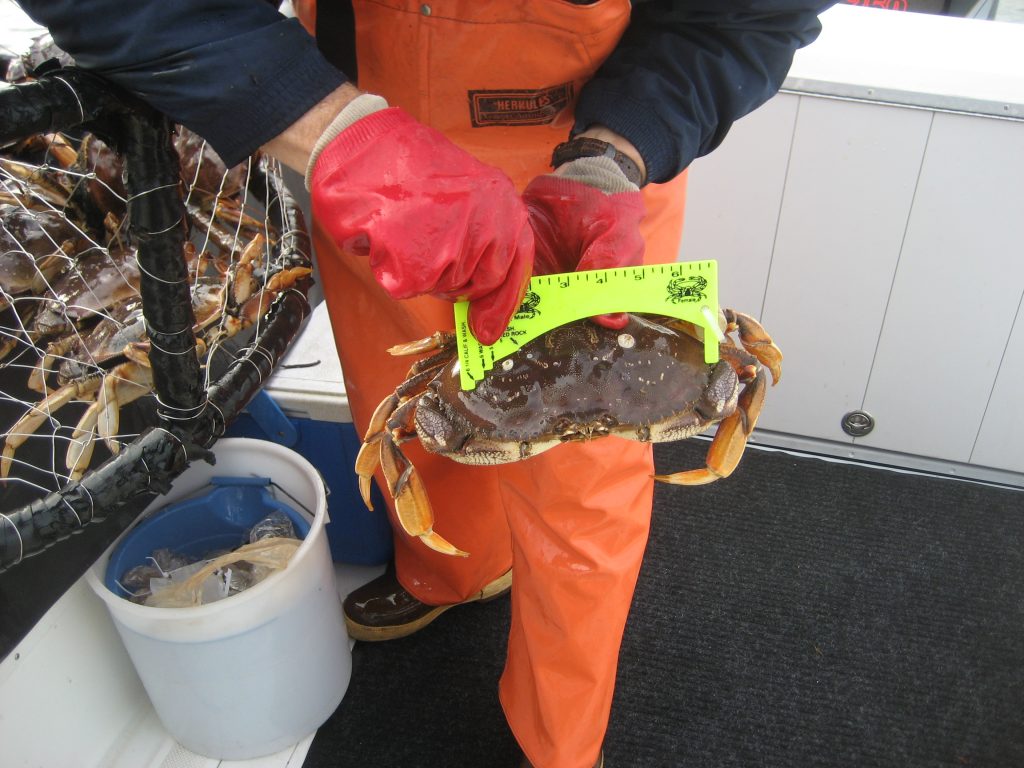
A breakdown of the total sport crab catch was 1,751,406 pounds in 2020 (compared to 1,676,401 in 2019; 1,587,764 in 2018; and 1,764,633 in 2017) in all open Puget Sound areas.
The 2020 sport crab catch in western Strait of Juan de Fuca in Neah Bay (Area 4) was 1,016 pounds in summer fishery (67 pounds in winter fishery), and at Sekiu (Area 5) was 4,325 pounds (416 pounds). The eastern Strait (Area 6) was 116,613 pounds (129,628).
The San Juan Islands (Area 7) was 424,038 (71,520); east side of Whidbey Island (Area 8-1) was 371,807 (27,907), and (Area 8-2) was 353,126 (39,663); northern Puget Sound (Area 9) was 96,556 (18,158); central Puget Sound (Area 10) was 35,615 (closed in winter); south-central Puget Sound (Area 11) was 26,585 (closed in winter); and Hood Canal (Area 12) was 32,758 (14,334). Southern Puget Sound (Area 13) was closed in summer and winter.
The summer — July through September — sport crab fishery continues to have the highest participation level with 213,831 in 2020 catch cards issued to anglers in 2020 (192,798 in 2019) compared to 36,459 (23,578 in 2019) during the winter fishery.
Don’t be a crabby rule breaker
Abiding by the rules is important, and taking a quick refresher course on reading the regulation pamphlet could keep you from getting ticketed on the water this summer.
WDFW enforcement has adopted a zero tolerance on folks who don’t fill out their catch card right after landing crabs. That means don’t blame your pen for running out of ink, and be sure to carry a few extra pens to jot down on your catch card. Separate catch record cards are issued for the summer and winter seasons. Anglers who plan to fish in Area 7 after Labor Day weekend will need to obtain a winter catch card.
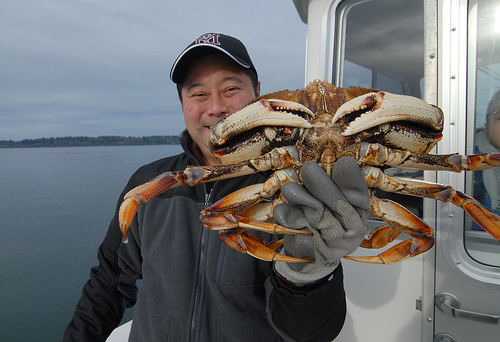
Another is how anglers measure their Dungeness crab, which must be at least 6 ¼ inches at the widest point of the shell just in front of the rearmost point or tips.
The most accurate way to measure a crab is by using a plastic caliper crab gauge, which are available at most sporting goods stores.
The daily limit in Puget Sound is five male Dungeness crab in hard-shell condition. You may also keep six red rock crab of either sex daily. Red rock crab must measure at least 5 inches.
Poaching crabs by pulling a crab pot that isn’t yours is also illegal, and those caught could be charged with theft.
Crabbers also overlook the mandatory use of a biodegradable rot cord (plastic zip cords are illegal to use) to secure the lid and escape hatches on the pots. The rot cord must be untreated 100 percent cotton or other natural fiber no larger than thread size 120. This cord must be able to rot away, and allow crab to escape freely. A derelict crab pot without a proper escape cord can attract and kill crabs for years after it has been lost.
Improperly marked crab pots is a violation commonly found by enforcement. Each buoy on the crab pot must have the person’s name and address.
Other violations include possession of female Dungeness crabs, keeping soft-shelled crabs, over limits, boating safety violations, and no fishing license or Puget Sound Crab Endorsement.
How to catch crabs
Now that you’ve caught crab fever, catching these delectable creatures is fairly easy and enjoyable whether using pots or traps from a boat or pier or simply by wading with a dip-net at low tide.
Unlike trying to catch a salmon, there isn’t too much skill involved that will allow just about everyone to experience this great saltwater fishing activity.
Crab pots are the most commonly used way to catch crabs from a boat or off of a pier, and are typically set from 10 to 60 feet deep and left to “soak” for several hours.
Ring nets should be monitored more regularly as bait can be picked away by crabs that come and go as opposed to pots, which trap the crabs through one-way entry doors.
Popular bait are salmon or fish carcasses and heads, horse clams, chicken or turkey parts and many outdoor stores also sell liquid attractants that can be applied to the bait to create a scent line to attract crabs from far away.
Another one of my favorite ways to catch Dungeness crab is by wading along the shorelines using a dip-net. Target bays with sandy bottoms and large beds of eelgrass where crab use as their habitat, and plan to hit the beach about two to three hours before low tide.
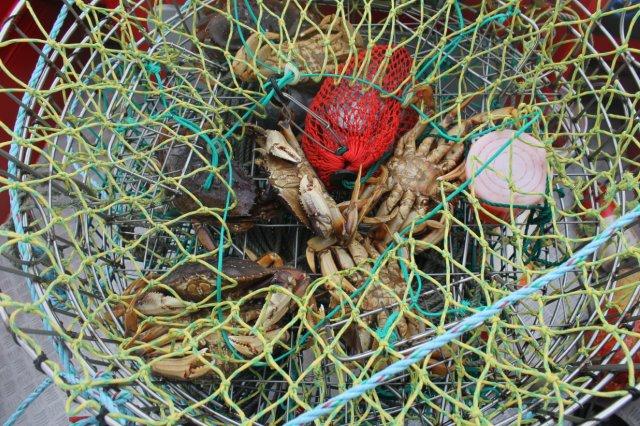
On hot days, you can wade out into the water with just a pair of old tennis show and swim trunks, but we know how the weather can be in the Seattle area so often most will don hip boots or chest waders. Bring a bucket or a large mesh bag to carry your crabs.
The water tends to magnify things so targeting them can be tricky at times, and often a scoop of the net will result in nothing as they zip away in a cloud of kicked up silt from the net and your feet. Lastly, be quick on the scoop as they’ll often hop out of the net before you get them to the surface.
There’s a wealth of information on the WDFW website with additional details and regulations at https://wdfw.wa.gov/fishing/shellfishing-regulations/crab.
Puget Sound spot shrimp update
The spot shrimp season has been going strong in remaining open areas of Puget Sound, and catches were excellent overall with high angler effort since the opener on May 19.
“We’ve got our spot shrimp updates, and Area 9, and Area 10 and Elliott Bay are done for the season,” Velasquez said. “The brief three-hour Elliott Bay fishery (on May 19) didn’t deter folks from coming out to participate and catches were fantastic.”
Catches in south-central Puget Sound (Area 11) weren’t that great and even slower in the Tacoma area, but Velasquez says it is still unclear if more days will be added.
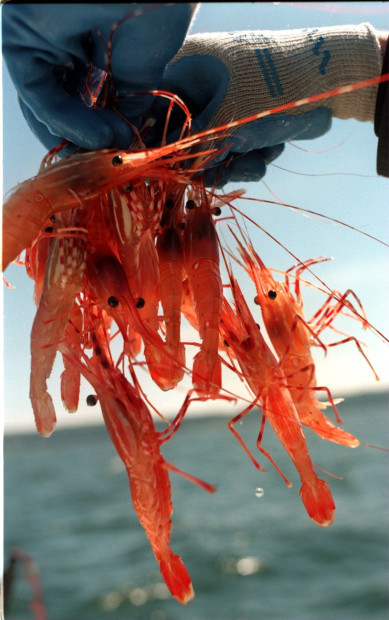
“There may be a little left in the spot shrimp catch quota for Areas 8-1 and 8-2 since effort wasn’t quite what we expected,” Velasquez said. “We could have another day of fishing, but need to look at other areas potentially opening since it could be a lightning rod effect and potential risk of going over the quota if it’s just those two areas open.”
The San Juan Islands (7 East and 7 West) are open June 16-19. If enough quota remains then it would reopen on July 15-17 and possibly July 29-31. The coonstripe shrimp fishery in 7 East will likely begin sometime after the spot shrimp season ends with depth restrictions.
In Hood Canal (12) spot shrimp fishing will reopen June 16 from 9 a.m. to 1 p.m.
The western Strait of Juan de Fuca in Sekiu (Marine Area 5)is open daily and ends once the quota is attained or Sept 15 whichever comes first.
The eastern Strait of Juan de Fuca (Marine Area 6) outside of Discovery Bay reopens June 16-19. If enough quota remains then it would reopen on July 15-17 and possibly July 29-31. The coonstripe shrimp fishery will likely begin sometime after the spot shrimp season ends with depth restrictions.
Velasquez indicated they’re also currently estimating catches for Areas 6 and 7, and won’t make a decision on additional dates until those fisheries end after June 19. The season in Hood Canal will end after the June fishery since they’re likely to attain the catch quota barrier.
“It was pretty good (on June 5) and I was at the Misery Point ramp where I interviewed 80 boats who had a lot of limits early on,” Velasquez said. “On Saturday (June 5) we counted 1,159 boats in Hood Canal.”
The coonstripe shrimp fishery in Area 7 East is scheduled to open on June 20 once the spot shrimp fishery ends. Areas 8-1, 8-2, 9, 11 and 13 are open daily beginning June 1 to Oct. 15 for coonstripe shrimp with gear and depth restrictions.
For specific season dates, hours of day fishing are allowed, what other shrimp species can be harvested, daily catch limits and rules on mesh size for pots used, consult the WDFW website at https://wdfw.wa.gov/.
Shad flooding into Columbia River
Huge number of shad are being counted and caught along the Lower Columbia River, and look for it to gain plenty of steam heading into the weeks ahead.
A whopping single-day counts of 126,796 happened on Thursday (June 10) and 94,774 on Wednesday (June 9) at Bonneville Dam bringing the season total to 672,075.
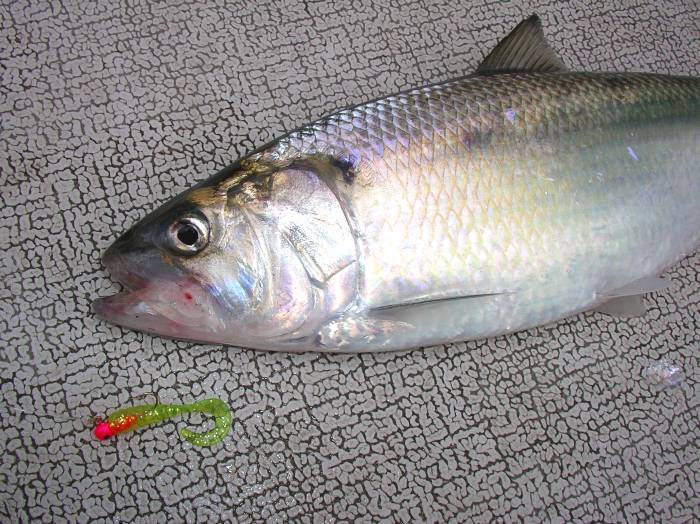
Other single-day counts are 69,724 on Tuesday (June 8); 40,174 on Monday (June 7); 44,248 on Sunday (June 6); and 54,233 on Saturday (June 5).
The 10-year average peak timing for shad usually occurs from early- to mid-June, and right now catches have been excellent.
Catches by the numbers this past week – 71 bank anglers below Bonneville kept 699 shad and released 11, and 4 boats with 9 rods kept 169 shad; 5 boats with 10 rods in Camas/Washougal area kept nine shad; 2 boats with 4 rods in Vancouver area kept four shad; 4 boats with 9 rods in Woodland area kept 36 shad and released 20; 8 boats with 15 rods in Kalama area kept 104 shad; and 2 boat s with 6 rods in Longview area kept 56 shad.
The shad return of nearly 6.0-million fish in 2020 was the fourth largest on record since 1980 and followed a record high return of 7.4-million in 2019. The shad run size includes escapement of 5.8 million fish upstream of Bonneville Dam, but doesn’t account for unknown numbers of shad spawning downstream of Bonneville Dam and Willamette Falls.
Since the late 1970s, runs have met or exceeded 1.0-million fish per year and through the 2000s, the 10-year average run size increased by around a million fish each successive decade with a peak of over 6.0-million fish in 2005. From 2010-2019, runs ranged from just over a million in 2011 to a new peak of over seven million in 2019.
The Lower Columbia and Lower Willamette combined sport catch was 168,700 shad (2.8-percent of the total run), and there were no mainstem non-treaty commercial landings in 2020. Harvest was below the recent five-year average (recreational and commercial combined) of 179,500 fish. The lower-than-expected sport catch likely stemmed from COVID-19 related closures and issues.
Shad are a migratory fish that spend three to four years in the ocean before returning to spawn in tributaries clear into the Upper Columbia River and into Hells Canyon of the Snake River.
Some of the best fishing occurs along the shoreline just below Bonneville Dam, but shad are spread out in the Camas Slough, and from Washougal downstream to Kalama. The most popular fishing location is just below Bonneville Dam by heading east on Highway 14 about two miles past the town of North Bonneville, and take the right-hand turn by transmission towers. The access road allows anglers about three miles of prime shoreline in either direction.
Shad tend to like a fast-running current, and most fish usually are caught no further than 30 feet from shore. Shad darts are the most effective lure, but red and white colored flies with a small hook, colored beads like red or metallic silver or gold, small crappie-like jigs along with small wobbler spoons will catch their fair share of shad.
Nibbles and bites
–There are some major salmon fisheries set to begin on Wednesday, June 16, south-central and central Puget Sound and Saturday, June 19, along the entire coast.
Neah Bay, La Push, Westport and Ilwaco open daily beginning June 19 for chinook fishing, and one way to gauge prospects is by following the on-going commercial troll fishery that opened on May 1.
“The fishing for trollers has been very inconsistent,” said Wendy Beeghley, the WDFW coastal salmon manager. “The trollers have had a lot of weather issues this season so I don’t know that fishing is poor or because they haven’t been able to spend enough time to find them.”
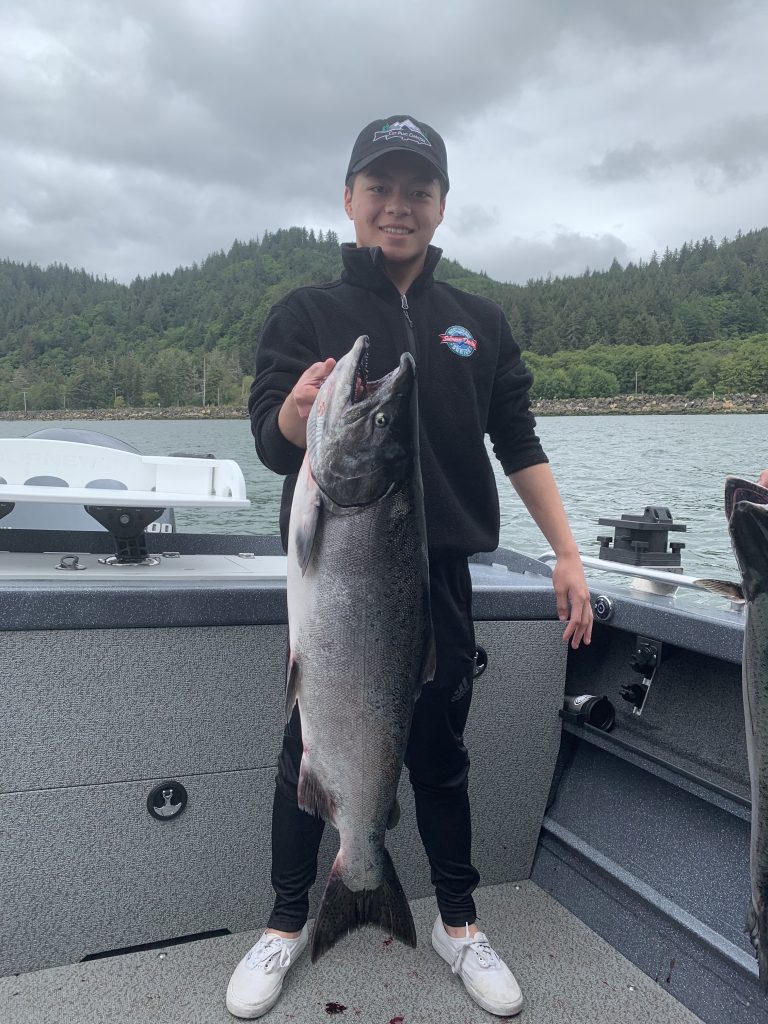
“It has been a lot like we’ve seen in the past couple of years where they’ll find pockets of fish and then they disappear immediately,” Beeghley said. “We’re seeing changes in the water temperatures that are warming up so that’s a good. Baitfish have also shown up as well as some whales, which typically are some positive signs for fishing, but just not a lot of catch at this point.”
Other good indicators include those fishing in southeast Alaska and off the west side of Vancouver Island have indicated an abundance of hatchery kings.
Beginning June 27 through Sept. 15, Ilwaco is open daily and Westport is open Sundays through Thursdays for chinook and hatchery coho. Then from July 4 through Sept. 15, Neah Bay and La Push are open daily for chinook and hatchery coho. Ports could close sooner if quotas are achieved so get out sooner than later.
Two other Puget Sound salmon fisheries opening June 16 is south-central Puget Sound for hatchery chinook and central Puget Sound for resident coho.
There have been some fairly good reports of early hatchery kings appearing in catches around southern Puget Sound south of the Narrows Bridge, which is currently open for salmon. Hit Point Fosdick and off Fox Island’s east side at Gibson Point, Toy Point and Fox Point.
The Tulalip Bubble Fishery, located north of Everett, has been somewhat slow for kings although some have found better success than others. In recent years, the fishery has been a fair to good producer of early-summer kings in the 10- to 20-pound range.
Fishing at the bubble is allowed each week from 12:01 a.m. Fridays through 11:59 a.m. Mondays only through Sept. 7, and then weekends only from Sept. 11-26.
The majority of kings in the bubble fishery are found in suspended water of 90 to 120 feet deep, and the best period is the early-morning period. Most will troll but jigging gets their fair share of fish too.
The Skykomish River from mouth to the Wallace River mouth is open for hatchery kings. The Skagit River from Highway 530 Bridge at Rockport to Cascade River Road is open for hatchery kings. The Cascade River is open from mouth to the Rockport-Cascade Road Bridge for hatchery kings, and closed on Sundays and Mondays of each week.–
–The halibut fisheries continue to see good catches although bad weather has impacted many anglers from getting out to the fishing grounds. WDFW indicates Ilwaco (Area 1) will remain open June 13, 17, 20 and 24, and Westport (Area 2) will be open June 17, 20 and 24.
Neah Bay/La Push (Areas 3 and 4) is open on Thursdays and Saturdays through June 26. The Strait of Juan de Fuca/Puget Sound (Areas 5-10 only) is open on Thursdays, Fridays and Saturdays through June 26.
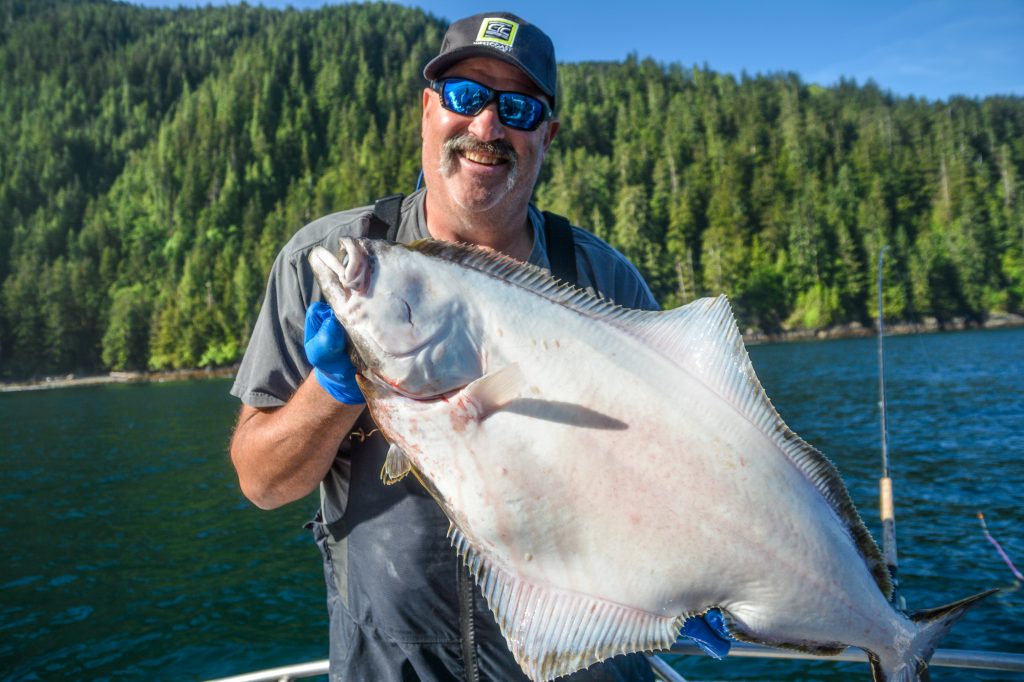
“We will reopen the northern coast and Puget Sound (Areas 3, 4, and 5 to 10) on Aug. 19 through Sept. 24 (or until the quota is caught) on Thursdays, Fridays and Saturdays only,” said Heather Hall, the WDFW coastal fish resource manager.
“Allowing to extend the season later into summer went well last year and we expect it to be a popular fishery again. Anglers have been seeing great halibut and lingcod fishing, but at times the weather hasn’t been very good.”
Neah Bay/La Push (Areas 3 and 4) is open now through June 26 on Thursdays and Saturdays. The Strait of Juan de Fuca/Puget Sound (Areas 5-10 only) is open now through June 26 on Thursdays, Fridays and Saturdays.
“We will reopen the northern coast and Puget Sound (Areas 3, 4, and 5 to 10) on Aug. 19 through Sept. 24 (or until the quota is caught) on Thursdays, Fridays and Saturdays only,” said Heather Hall, the WDFW coastal fish resource manager.
“Allowing to extend the season later into summer went well last year and we expect it to be a popular fishery again. Anglers have been seeing great halibut and lingcod fishing, but at times the weather hasn’t been very good.”
–Here are the latest WDFW trout plants from May 26 to June 9 with many statewide lakes generating good catches of fish.
Pierce County: Louise, 600; American, 5,216; Florence, 1,500. Jefferson: Leland, 47. Yakima: Bumping, 5,040; Myron, 1,200; Tims, 1,200; Clear, 6,200; Sarge Hubbard, 1,200; Dog, 4,312; Tims, 1,500. Skamania: Goose, 4,975; Swift Canal, 4,200.
Cowlitz: Sacajawea, 2,000; Merwin, 1,224; Kress, 2,020; Horseshoe, 100. Clark: Klineline, 350. Lewis: Mayfield, 11,720; Mineral, 2,525. Walla Walla: Bennington, 2,550. Columbia: Blue, 2,550; Curl, 2,550; Rainbow, 3,550; Deer, 400. Kittitas: Fio Rito, 2,400; Lavender, 2,600; Easton 3, 2,700. Klickitat: Rowland, 2,000; Spearfish, 2,042. Grays Harbor: Failor, 1,525; Aberdeen, 1,300; Sylvia, 1,153; Vance Creek Adult, 1,180; Vance Creek Juvenile, 1,230.
–Extreme low tides happening now through Tuesday will allow shellfish gatherers to hit the beaches for clams, mussels, oysters and geoduck.
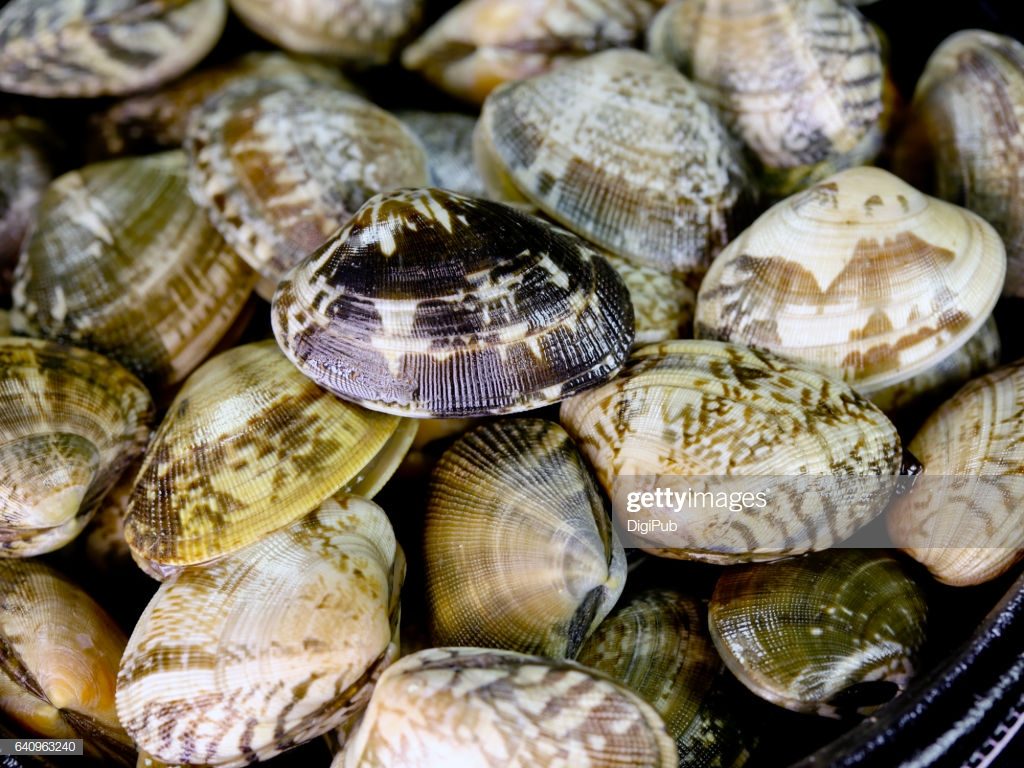
Public access on many beaches is relatively easy, but be sure to check the WDFW and Department of Health websites for any closures or changes. A list of beaches can be found at https://wdfw.wa.gov/sites/default/files/2021-03/adopted_2021wdfwbeachseasonsbarchart.pdf.
For emergency beach closures, call the marine biotoxin hotline at 800-562-5632 or visit the DOH website at www.doh.wa.gov. Also check the WDFW hotline at 866-880-5431 and website at http://wdfw.wa.gov.
Also keep in mind that all eastern mainland beaches from Everett south into southern Puget Sound are also closed for shellfish due to unsafe pollution levels.
Upcoming low tides: June 11, -1.9 at 12:06 p.m.; June 12, -2.0 at 12:43 p.m.; June 13, -1.9 at 1:22 p.m.; June 14, -1.6 at 2:04 p.m.; June 15, -1.1 at 2:48 p.m.; June 22, -2.1 at 9:29 a.m.; June 23, -3.1 at 10:14 a.m.; June 24, -3.8 at 11 a.m.; June 25, -3.9 at 11:46 a.m.; June 26, -3.6 at 12:33 p.m.; June 27, -2.9 at 1:21 p.m.; and June 28, -2.0 at 2:08 p.m.
–It’s also time to keep an eye on the summer chinook counts at Bonneville Dam on the Columbia River that hit 12,085 on Thursday (June 10) and are the driver for upper river sport fisheries at places like Chelan Falls. The single-day counts between June 4-10 have averaged 1,001 to 1,448 and jack chinook counts also look strong with 2,186 counted so far this season.
The second and third week in July is the best period, but you can catch them into early August. Fishery managers are predicting decent back-to-back seasons for Upper Columbia summer chinook returns.
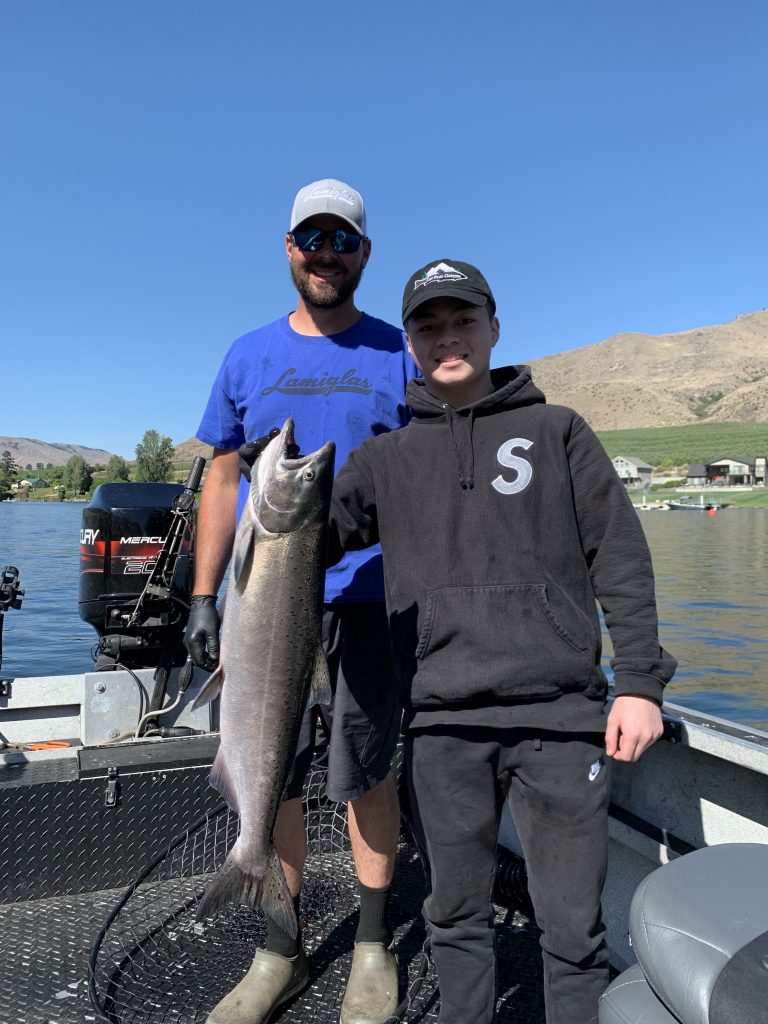
The Upper Columbia has a rather liberal six salmon daily limit (up to two may be an adult hatchery chinook or two sockeye or one of each); release coho and wild adult chinook.
If a 77,600 forecast comes to fruition it would rank as the seventh highest since 1980, and 109% of the average return observed over the past decade. A good chunk is large-size chinook better known as “June Hogs” comprised of 36,900 four-year-old; 39,900 five-year-old; and 800 six-year-old fish.
The 2020 return was 12th largest since 1980, totaling 65,494 compared to a 38,300-preseason forecast. The 2020 return was 91% of a 71,995 recent 10-year average (2010 to 2019); and 96% of the average observed since 2001, and nearly four times the 17,425 average between 1980 to 2000.
It’s also time to start tracking the sockeye runs and through Thursday (June 10) a total of 1,458 have been counted. The 2021 forecast is 154,900 sockeye (127,300 to Okanogan) compared to a 2020 actual return of 345,018 (273,667 was predicted), and hopes are high it’ll once again wax expectations.

